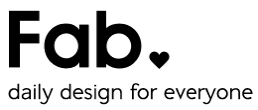The Fabulous Demise of Fab.

For this post, I will analyze why exactly Fab was in fact always a digital loser and why VC’s didn’t notice and actually encouraged this behavior.
The Beginning
- The Hype
Fab launched under massive hype. Originally a gay men’s dating site, Jason Goldberg soon pivoted to an underserved market (value creatopm) – an eclectic and quirky eCommerce platform for hand-picked and unique home / personal goods. Coming from a political and marketing background, Goldberg was able to successfully launch his site with massive PR and investor interest.
Fab also benefited from the soon-to-die flash sales model. Piggybacking off the trend, it was instantly noticed by millennials and high-earning professionals who were looking for unique items and weren’t bothered by high price points. The site garnered lots of initial visits and high conversion rates.
- The Growth
Fab also display crazy high growth rates. It hit 5M users faster than Facebook did and rapidly acquired 3 European startups in all-stock transactions. By 2012, it earned $150M in revenue and its users swelled to 14M.
Funding kept pouring in, with a $150M Series D round at a pre-money valuation of $1B. It was as if Fab could do no wrong.
The End
Fab displayed a lot of promise at as a digital eCommerce pathbreaker, but it’s fundamentals were broken. Continued investment allowed Fab to delay necessary critical analysis of its business model and scaling strategy. And investor pressure led to mismanaged goals and expectations. Ultimately, it was a business / financing problem and not a digital one that led to Fab’s demise.
- Growth
Venture money mandated short-term, top-line growth and so Fab performed according these incentives. Its rapid acquisitions, expansion into Europe, and excessive SKU growth all fed into these short-term incentives.
The company had an excellent digital platform and loyal customers, but while focusing on growth, it lost sight of a cohesive strategy that tied together these areas of growth and the actual cost to that growth. For example, the acquisitions and Europe expansion bled money – analysts estimate that moving to Europe cost the company between $60 and $100M.
Similarly, massive SKU growth, though ostensibly growing the marketplace and enhancing supply, actually served to blur the core brand as it became less niche and tried to become everything for everyone.
- Inventory Strategy
Fab leaders continuously de-prioritized the retail part of the business as they mishandled inventory and miscalculated warehouse strategy. For example, Fab began with the drop-shipping model which led to ship-times that were on average 16.5 days per customer.
In order to deal with lagging manufacturer ship times, Fab then adopted an inventory holding policy, where they bought items that were expected to sell and held them in order to manage ship times. The buying unit was barely built out and highly inexperienced, and soon Fab was left with $15M of inventory that no one bought. Not only that, this requires a huge sum of up-front capital that put pressure on margins when in fact all that was needed was a strict shipping policy. The warehouses to hold this inventory were often mismanaged and inefficient – for example, Fab paid $12M upfront for a European warehouse before their business was established, only to lose it when the office shut down months after opening.
Despite the warning signs, they began developing and selling their own products, which then highly increased the number of supply chains they had to manage and pushed them into manufacturing – a space almost none of the executives had experience in. This sank margins and in turn put further pressure on other pieces of the business.
- Product Market Fit
Fab as it started had an organic product market fit – this explains the rapid user adoption and engagement. However, it was a mismanagement of growth incentives along with poor strategic management that led to it losing that very natural product market fit.
Fab tried to be too many things for too many people – it’s founders were fundamentally marketers and thus, the marketplace model of business best suited their expertise and was also best from a cash-utilization perspective. However, due to investor pressure (and perhaps founder greed / ignornace) to grow, the company adopted rapid growth strategies that didn’t heed cost constraints or build upon an overarching strategy.
Final thoughts
In the end, we see how a company that has the perfect digital platform can still fail from a result of poor business and financial decisions. The digital economy democratized opportunity for traditionally non-technical or non-business people, but in this case, it was proven to not alone be sufficient for success.
Hopefully this gives us future HBS grads a place in the digital technology as good solid business fundamentals and managers are still essential for any digital innovation.



Meghana – great post, I really enjoyed it. I also appreciate the fact that you chose a digital “loser” and demonstrated the fact that even with a great digital strategy, the remainder of the operating model and business model must tie together. A couple of questions came to mind as I read your post. First, given the idea to focus on selling eclectic and quirky hand-picked goods, do you think the business may have been doomed to fail from the start? Seems like that choice does not really provide a large, or consistent, enough target market to go after. Second, why do you the VC firms who invested in the company paid so little attention to the operations side of the business? I understand that they would be primarily focused on top line growth, but seems like a strange oversight particularly in the later fundraising rounds. And lastly, do you think the inventory management and turnover issues would have been ameliorated if Fab had focused on more mass produced type, rather than “unique” products? Your post definitely highlights the importance of having a fully integrated business and operating models, as well as physical and digital strategies.